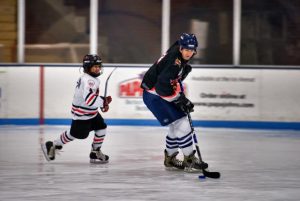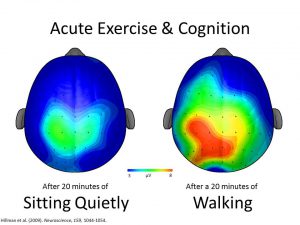The Physical Activity Guidelines Advisory Committee is composed of 17 nationally recognized experts in the fields of physical activity and health. These distinguished individuals agreed to serve on the Committee in a voluntary capacity to review current evidence and make recommendations that will help inform the next edition of the Physical Activity Guidelines for Americans. This post is part of a series of interviews with the Committee members to learn more about the men and women providing independent expertise and service to improve the health of the Nation.

Today, we are highlighting Dr. Charles Hillman, Professor of Psychology and Health Sciences, and Director of the Laboratory for Cognitive and Brain Health at Northeastern University. On the Committee, Dr. Hillman serves as a member of the Brain Health and Youth Subcommittees.
What led to your interest in physical activity?
Growing up in Boston, I was always physically active: I went running, played basketball, did pull ups, and played baseball with my dad. While going to school for psychology, I discovered the emerging field of exercise and sports sciences and I was hooked. For my master’s thesis, I studied the emotional responses of sports fans. Although I was initially interested in elite athletes and the environment that surrounds them (such as sports fans), my interests shifted to physical activity and its associated health benefits for everyone.
Tell me about some of your recent research
I recently moved back to Boston to work at Notheastern University and, now I mostly study pre-adolescent children but collaborate with my colleagues on work surrounding cognitive aging. I study the effects of regular physical activity; as well as how a single bout of exercise can influence brain health, cognition, and even academic achievement in children.

What do you think are some of the barriers that prevent people from meeting the Guidelines?
We’re victims of our own ingenuity; we drive a car to work, take the elevator, and drive home to watch multiple TV episodes we’ve recorded throughout the day. We all have competing interests and time constraints, but once you’ve developed a lifestyle without physical activity it becomes habit. For those struggling to add physical activity back into their life, I would advise them to look for opportunities in their daily routines — take the stairs, walk whenever possible, and aim to include physical activity throughout the day. Once you’ve done that, seek additional opportunities for physical activity. For example, I try to get to the gym 3-4 times per week, and play hockey at least twice a week. In the summer, I mountain bike and, in the winter, I go skiing. I think it is important for everyone to find a way to make physical activity a part of their daily routine, and importantly that they look forward to — one suggestion is to exercise in nature.
If you could change one thing in this world to make it easier for Americans to meet the Guidelines, what would it be?
I would incentivize physical activity in the workplace and through monetary incentives in health insurance. My current insurance plan offers a financial incentive for being physically active; the amount I earn back covers the cost of my gym membership. These types of financial incentives can shape behaviors and reinforce positive habits. I believe physical activity is pivotal for overall health — not only the physical benefits such as weight management, but also important effects on mental health such as attention, memory, and self-efficacy. These benefits are worth the investment.
~
The Office of Disease Prevention and Health Promotion would like to personally thank each of the members for their dedication and service on the Committee. The Committee’s independent review of the scientific literature is the result of thousands of hours of work and will culminate with the submission of the 2018 Physical Activity Guidelines Advisory Committee Scientific Report to the Secretary of the Department of Health and Human Services (HHS). HHS will use the report to develop the next edition of the Physical Activity Guidelines for Americans.